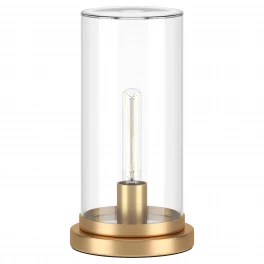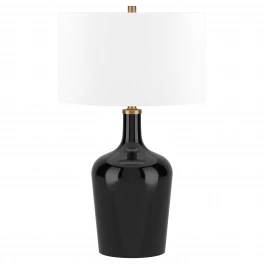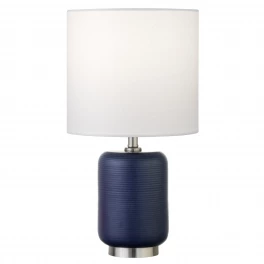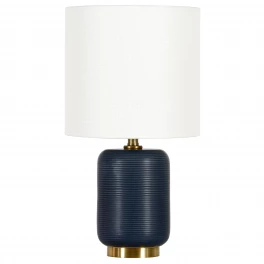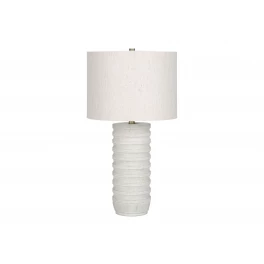If you live in a wooded area, chances are that a thunderstorm or snowstorm has brought down trees and power lines and left you in the dark. Even people living in cities sometimes experience power outages due to a blown transformer or another issue. The power is usually restored in a few hours, but in the case of a large storm that has widespread damage to power lines, you could be left without power for several days. In addition to being inconvenienced, heating, cooling, and spoiled food can be a real concern. If you live in an area that does experience frequent power outages, a portable power generator can help you stay comfortable and save your food until the power comes back on.
Types of Power Generators
Portable
For most people, a small, gasoline-powered, portable generator will be adequate to get you through a few days without power. They will keep a refrigerator and freezer going, allow you to heat up items in a microwave, watch TV, use the computer, and turn on a lamp or two. A portable generator costs between $300 and $1,500 depending on the power output.

Photo by N-sky on Shutterstock
Standby
A standby generator is a permanent fixture on a concrete pad on your property that’s installed by an electrician and wired to your house. They are powered by propane or natural gas and will come on automatically when the power goes out. Depending on what items you have chosen to be powered by the standby generator, you will be able to shower, cook, wash clothes, and go about your daily life without much inconvenience. Standby generators are a big investment and range from a cost of $5,000 to $20,000 depending on the power output. If you live in an area prone to hurricane damage, a standby generator might be a good investment, but for most people, a portable generator will get them through.

Photo by alexfan32 on Shutterstock
What Size Generator Do You Need?
The average homeowner needs between a 4,000- and 7,000-watt generator to power most common household items. A 4,000-watt generator is at the low end of the scale but will power your essential electrical appliances until the power comes back on.

Photo by N-sky on Shutterstock
Before you start looking at portable generators, you need to decide what you can’t live without that requires power. For most people, the refrigerator and/or freezer comes first. Depending on your stove, you will probably not be able to power a stove with a portable generator, but you will have no problem with a microwave. Computers and Wi-Fi equipment are important for a lot of people. Heating and cooling also need to be considered, depending on the season.

Photo by Robert Kyllo on Shutterstock
How to Determine Your Power Needs
Make a list of everything that’s essential to get you through a few days without power. Look for a label on the appliance or item that indicates the wattage it draws. Some labels are located inside the door of the appliance. Others may be on the back or bottom. It’s possible the label only lists amps and volts. To determine watts, simply multiply the amps times the volts (5.5 amps x 115 volts = 632.5 watts). Add all the wattages together and then multiply the total by 1.5 (large appliances need a little extra power to start up). Your final number is the minimum wattage you’ll need for the generator. Keep in mind that most generators come with two or four outlets so you may not be able to power everything at the same time. Your list might look something like this:
- Refrigerator/Freezer: 700 watts
- Chest Freezer: 500 watts
- Microwave: watts
- Sump Pump: 800 watts
- TV: 300 watts
- Space Heater: 1,800 watts
- Small Fan: 100 watts
- Coffee Maker: 700 watts
- Computer: 800 watts
- Laptop: 250 watts
- Air Conditioner: 1,500 watts
- Lamp: 100 watts
- Cell Phone Charger: 5 watts
If you wanted to run the refrigerator, chest freezer, sump pump, lamp, and computer, your total comes to 4,300 watts. A 5,000-watt generator would be able to power all these items at the same time.
How to Operate a Portable Generator
After you have purchased the correct size generator, do a test run so are familiar with operating it. Power rarely goes out at convenient times. You may be trying to start it in the wind, rain, or dark with a flashlight clenched between your teeth.

Photo by Mimka on Shutterstock
Generators produce carbon monoxide, which is deadly. Place the generator at least 10 feet away from the house, the more distance, the better, but you will be limited to the length of the extension cords and location of your appliances. Use a carbon monoxide detector when using a portable generator. Wind and open windows can blow generator exhaust into your home without you realizing it. Make sure the exhaust port on the generator is pointing away from the house. Never use a generator in a garage.

Photo by SpeedKingz on Shutterstock
Generators require fuel which is usually gasoline; some run on diesel. Make sure you have fresh gasoline available. Always read the instructions that come with the generator. Once the fuel tank is full, start the generator. There’s usually an on/off switch, a choke, and either a pull or electric start. Generators are a bit noisy and sound much like a lawnmower — even more reason to keep them away from the house. Once the generator is running, plug in your extension cords.
Most generators have two or four outlets. Four is preferred for home use. Extension cords must be at least 14 gauge and rated for outdoor use. The wattage of the cord will be listed on a label. Run the extension cords into your home and you now have a power source for your appliances.

Photo by Lisa F. Young on Shutterstock
Depending on the size of the fuel tank, a generator can run for up to 10 hours. Most have a gauge that will show you the level of the gas in the tank. When it’s time to add more gas, be sure to shut off the generator and let it cool. Just like a lawnmower, pouring gasoline into a hot tank can cause explosions and burns.
Generators have circuit breakers, and if you overload the circuit, it will trip and shut off the outlet. You can plug more than one item into an extension cord, but try not to overload the circuit as this can damage motors in appliances. Run only essential items. Candles and oil lamps can be used for light, and a refrigerator will stay cold for about four hours if unopened. A full freezer can keep food frozen for up to 48 hours if unopened.
For most of us, electricity is essential for everyday living. We can go without power for a few hours, but after that, we tend to panic and think it may never come back. Fire up the generator and plug in your essentials, then thank the power gods (and your local linemen) when the power returns.





